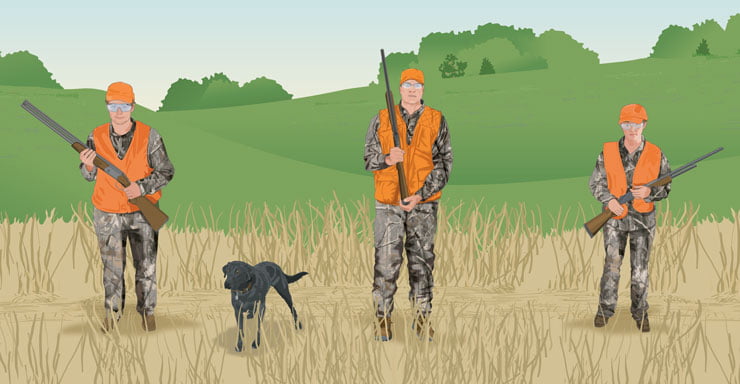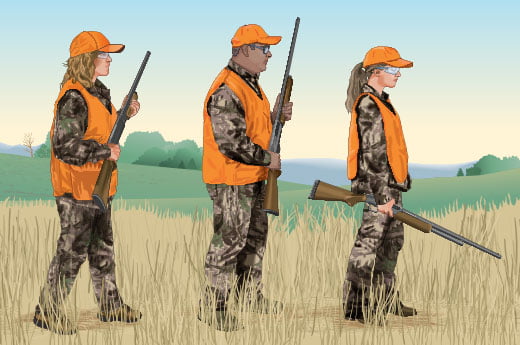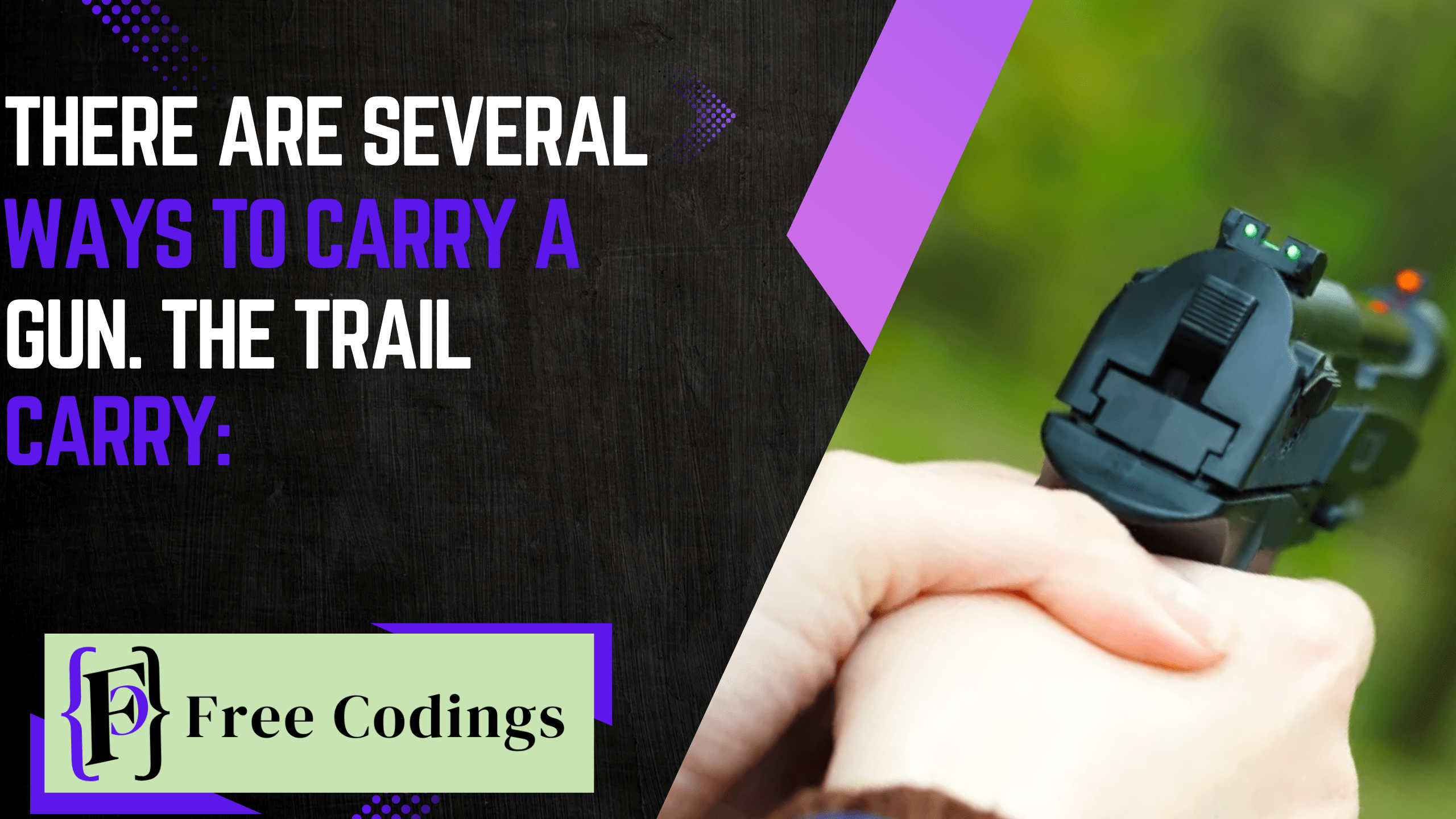There Are Several Ways to Carry a Gun. The Trail Carry:
Introduction
When venturing into the great outdoors, whether for hunting, hiking, or exploring, carrying a gun safely is crucial. The trail carry is one of the most effective and widely used methods. In this comprehensive guide, we will delve into the details of the trail carry, its benefits, how to perform it correctly, and compare it with other gun carrying methods. We’ll also discuss safety tips and best practices to ensure a secure and enjoyable experience. For further reading, I’ve included helpful links throughout the article.
What is the Trail Carry?
The trail carry involves holding the gun with one hand, with the muzzle pointed down and slightly forward. This position allows for easy movement while keeping the gun ready for use. It’s particularly useful when walking on a clear path or trail, as it minimizes the risk of the gun getting caught on branches or other obstacles.

How to Perform the Trail Carry
- Check Your Surroundings: Before assuming the trail carry position, make sure the area around you is clear. Always be aware of where your muzzle is pointing.
- Hold the Gun Properly: Use one hand to hold the gun around the action area. Ensure your finger is off the trigger and outside the trigger guard.
- Position the Muzzle: Point the muzzle downwards and slightly forward. This ensures that if the gun were to discharge accidentally, the bullet would go into the ground away from your feet and others.
- Stay Alert: Keep your eyes on the trail and be ready to switch to a different carry method if the terrain changes or if you need to use both hands.

Advantages of the Trail Carry
- Ease of Movement: The trail carry allows for easy and comfortable movement along clear paths. It reduces arm fatigue since one hand is free, which is especially helpful on long hikes.
- Quick Access: The gun is in a ready position, making it easy to bring up to your shoulder quickly if you spot game.
- Safety: By pointing the muzzle down, the risk of accidental discharge causing injury is minimized.
Comparing Different Gun Carry Methods
While the trail carry is excellent for certain situations, it’s important to know other methods and when to use them:
- Two-Handed Carry: Both hands hold the gun, offering maximum control and readiness. This is best for dense areas where quick access and control are needed. Learn more about Two-Handed Carry
- Shoulder Carry: The gun rests on your shoulder with the muzzle pointing up. This is good for long walks, but not ideal in thick brush where branches could snag the gun. Explore Shoulder Carry
- Cradle Carry: The gun is cradled in the crook of your arm. It’s comfortable and safe but can be slower to bring into firing position. Understand Cradle Carry
- Elbow or Side Carry: The gun is held by the elbow or side with the muzzle pointing down. It’s comfortable and less tiring but not as secure as other methods. Check Elbow Carry
Safety Tips for Carrying a Gun on the Trail
- Always Point the Muzzle in a Safe Direction: This is the cardinal rule of gun safety. Ensure the muzzle is pointed away from people, pets, and anything you don’t intend to shoot.
- Keep Your Finger Off the Trigger: Until you are ready to shoot, keep your finger outside the trigger guard.
- Be Aware of Your Surroundings: Stay alert to changes in terrain, obstacles, and other people or animals.
- Know Your Target and Beyond: Always be sure of what you are shooting at and what is beyond it. This helps prevent accidents.
The Importance of Gun Safety
Gun safety cannot be overstressed. A moment of carelessness can lead to severe consequences. Here are some general gun safety rules to always keep in mind:
- Treat Every Gun as if it is Loaded: Even if you believe a gun is unloaded, always handle it with the assumption that it is loaded.
- Be Sure of Your Target: Understand what you are aiming at, the area around it, and what lies beyond.
- Keep the Gun Unloaded Until Ready to Use: Only load your gun when you are in the field and ready to shoot.
For a deeper understanding of gun safety, visit the NRA Gun Safety Rules.
Preparing for a Safe Outdoor Adventure
Before heading out, ensure you have all the necessary gear and knowledge to handle your gun safely. Here are some steps to prepare:
- Get Proper Training: Enroll in a gun safety course to learn how to handle and carry your gun properly. Find a course near you
- Check Your Equipment: Ensure your gun is in good working condition and that you have the appropriate ammunition.
- Plan Your Route: Know the trail you will be taking, and inform someone about your plans.
The Trail Carry in Different Scenarios
The trail carry is versatile but might not be suitable for all situations. Here are some scenarios and the best carry methods for each:
- Dense Forests: In thick brush, the two-handed carry or cradle carry might be safer to prevent snagging on branches.
- Open Fields: The trail carry is perfect for open, clear paths where movement is unobstructed.
- Steep Terrain: On steep or rocky terrain, the shoulder carry might provide better balance and control.
Real-Life Experiences
Many hunters and hikers have shared their positive experiences with the trail carry. John, an experienced hunter, says, “The trail carry has been my go-to method for years. It keeps my gun ready and my hands free, making it easier to navigate through the woods.”
Similarly, Sarah, an avid hiker, mentions, “Using the trail carry on clear trails has made my hikes more enjoyable. I feel safer knowing the muzzle is pointed down, and I can quickly switch to a different carry if needed.”
Conclusion
The trail carry is an excellent method for safely and comfortably carrying a gun on a clear path. It offers ease of movement, quick access, and enhanced safety. By understanding and practicing the trail carry, along with other carrying methods, you can ensure a safe and enjoyable outdoor experience. Always prioritize safety and be mindful of your surroundings to prevent accidents and injuries.
For further reading on gun safety and carrying methods, visit the following links:
- NRA Family: Carrying a Hunting Firearm
- Hunter-Ed: Shoulder Carry
- Hunter-Ed: Cradle Carry
- Hunter-Ed: Elbow or Side Carry
By following these guidelines and continuously educating yourself on safe gun handling practices, you can enjoy your outdoor adventures with confidence and security.





